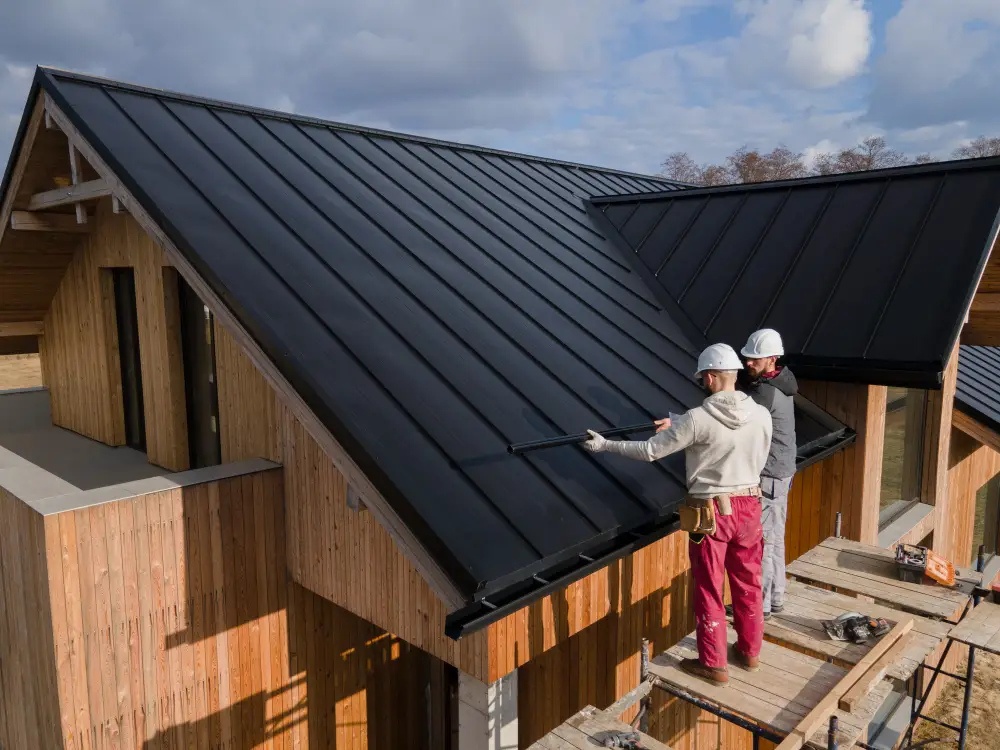Secure Construction Loan Funding in May, Idaho

Introduction to Construction Loans in May, Idaho
Construction loans provide essential financing for individuals and businesses looking to build new structures in May, Idaho, a rural gem in Lemhi County renowned for its agricultural heritage and outdoor recreational opportunities. Unlike traditional purchase loans that fund the acquisition of existing homes, construction loans are short-term financing options designed specifically to cover the costs of land preparation, materials, labor, and other building expenses during the construction phase. Once the project is complete, these loans typically convert to a permanent mortgage, offering a seamless transition for borrowers.
In May, Idaho, where the landscape supports custom residential homes, farm buildings, and small commercial developments tailored to the community's agricultural and lifestyle needs, construction loans are particularly relevant. They enable builders to leverage owned land as collateral, potentially reducing down payments, and accommodate the unique demands of rural projects, such as those adhering to local zoning and environmental standards. For residential builds, options like one-time close loans simplify the process with a single application and closing, while commercial loans cater to business expansions in this tight-knit area.
At Summit Lending, our experienced brokers can guide you through the specifics of construction financing in May, Idaho, ensuring compliance with local requirements like permits from the county or Idaho Division of Building Safety. Whether you're a first-time builder or an established developer, exploring these loans can turn your vision into reality. For personalized advice, visit our construction loans page or contact us via our contact us form to get started on your pre-approval process.
Securing Funds for Building Constructions
Building your dream home in May, Idaho, requires careful planning and access to the right financing options. As a trusted mortgage broker, Summit Lending specializes in construction loans tailored to your needs in Idaho. This step-by-step guide will help you navigate the process of obtaining construction financing, ensuring you meet all requirements and secure the best terms.
Step 1: Assess Eligibility Requirements
Before applying for a construction loan, evaluate your financial readiness. Lenders typically require a strong credit score of at least 680 for competitive rates, stable income to support debt-to-income ratios under 43%, and a down payment of 10-20% of the total project cost. In rural areas like May, Idaho, using owned land as collateral can reduce your down payment needs. Gather documents such as pay stubs, tax returns, and bank statements to demonstrate your financial stability. For personalized eligibility checks, visit our Pre-Approval page to start the process smoothly.
Step 2: Explore Loan Types
Construction loans come in various forms to fit different project timelines and budgets. A construction-to-permanent loan is ideal for most homebuilders, as it covers the building phase with interest-only payments and seamlessly converts to a traditional mortgage upon completion, often with just one closing. This option is available for primary residences, including single-family homes, modular builds, and barndominiums, with build times up to 12 months. Alternatively, stand-alone construction loans provide short-term funding (6-18 months) for the build phase, requiring a separate permanent mortgage afterward. Summit Lending offers these through our comprehensive Construction Loans services, including options for lot purchases or refinancing existing land equity. Explore more on our Mortgage Loans page to compare what's best for you.
Step 3: Understand Local Regulations and Zoning Considerations Specific to Jefferson County
May, Idaho, falls under Lemhi County jurisdiction, but if your project borders or involves aspects of Jefferson County, be aware of overlapping regulations. Idaho's building permits are handled at the county or city level, with the state's Division of Building Safety overseeing trades like electrical and plumbing in rural, unincorporated areas. Key considerations include zoning compliance for rural builds, seismic and snow load designs (up to 120 lbs ground snow load in mountainous regions), and Wildland-Urban Interface fire-resistant materials. Obtain necessary permits for structural work, septic systems, and wells before applying for financing. Jefferson County-specific rules may apply for projects near county lines, emphasizing flood-proofing in prone areas and contractor licensing. To ensure compliance, consult local authorities early. For expert guidance on navigating these, reach out via our Contact Us page—our team with over 50 years of experience can connect you with resources.
Step 4: Tips for Preparing Construction Plans and Budgets to Strengthen Loan Applications
A well-prepared application can significantly improve your approval chances and secure better rates. Start by developing detailed construction plans, including site layouts, floor plans, and engineering calculations for structural integrity. Work with licensed, insured builders to create a comprehensive cost breakdown covering materials, labor, and timelines—lenders often require this to assess project feasibility. Build in a 10-15% contingency budget for unexpected expenses, and use tools like our Loan Calculator to estimate payments and affordability. Secure builder contracts and pre-qualify your builder's credentials. For first-time builders, check our First Time Home Buyers resources for additional tips. Once ready, submit your application through our secure portal at https://summitlending.my1003app.com/300501 to upload documents and move forward efficiently.
At Summit Lending, we're here to guide you every step of the way. Contact us at 385-200-1470 or [email protected] to discuss your construction project in May, Idaho, and get started today.
Calculating Loan Payments for Construction Projects
Estimating loan payments for construction projects in May, Idaho, requires a clear understanding of the unique structure of construction loans. These loans differ from traditional mortgages by funding the build in phases, often with interest-only payments during construction, before converting to permanent financing. At Summit Lending, we specialize in helping clients navigate these calculations to ensure your project stays on budget. Below, we'll break down the key factors and methods to accurately forecast your payments.
Factors Influencing Loan Costs
Several elements impact the overall cost of a construction loan in May, Idaho. Interest rates are a primary driver; current rates for construction loans can vary based on market conditions, your credit score, and the lender's offerings. For instance, local lenders like those in Idaho often provide competitive fixed or variable rates, with options up to 95% loan-to-value (LTV) on construction costs. Loan terms typically last 6 to 12 months during the build phase, matching your project's timeline, and can extend up to 30 years once converted to a permanent mortgage.
Draw schedules also play a crucial role. Funds are disbursed in stages—such as for foundation, framing, and finishing—based on inspected progress. Each draw accrues interest only on the amount released, which helps manage cash flow but requires precise planning. To explore personalized rates and terms, visit our Construction Loans page or connect with one of our experienced Loan Officers.
Methods for Calculating Interest-Only Payments During the Construction Phase
During construction, payments are usually interest-only on the drawn funds, calculated monthly. The formula is straightforward: Monthly Interest = (Outstanding Principal × Annual Interest Rate) / 12. For example, if you've drawn $100,000 at a 7% annual rate, your monthly payment would be ($100,000 × 0.07) / 12 = $583.33. As draws increase progressively, so do your payments—starting low and ramping up as more funds are released.
In May, Idaho, where rural builds may involve unique considerations like snow load designs or septic approvals, accurate draw projections are essential. Use our Loan Calculator to simulate these scenarios with up-to-date interest rates. This tool allows you to input your project's estimated draws and timeline for a realistic payment forecast, helping you budget for interest-only phases without surprises.
Transition to Permanent Financing and Long-Term Repayment Calculations
Once construction completes, your loan typically converts to a permanent mortgage with principal and interest payments. This one-time close option, common in Idaho, locks in your rate early and avoids a second closing. Long-term calculations use the standard mortgage formula: Monthly Payment = [P × (r(1+r)^n)] / [(1+r)^n - 1], where P is the principal (total construction cost), r is the monthly interest rate, and n is the number of payments.
For a $300,000 loan at 6.5% over 30 years, payments might total around $1,896 monthly. Factors like property type—whether a primary residence, second home, or investment—can influence eligibility and terms. Our Purchase Loans or Refinance Loans resources provide more on seamless transitions. For first-time builders, check our First Time Home Buyers guide to understand pre-approval impacts on your final rates.
Importance of Using Accurate Tools to Forecast Total Project Costs
Accurately forecasting total costs goes beyond payments—include fees (like origination, appraisal, and inspection), contingencies (10-20% buffer for overruns), and local Idaho requirements such as permits for rural areas in Lemhi County. Underestimating can lead to delays or higher borrowing needs. Our Lemhi County, Idaho Construction Loan Calculator or tools for the 83253 Zip Code help model these comprehensively.
Ready to start? Get pre-approved via our Pre-Approval process or read tips in our Blog. For commercial aspects, explore Commercial Loans. Contact us at Contact Us to discuss your May, Idaho project with our team, backed by over 50 years of experience.
Key Considerations for Construction Loans in May, Idaho
When pursuing a construction loan in May, Idaho, a small rural community in the Snake River Plain, it's essential to evaluate several key factors to ensure a smooth building process. This area offers unique opportunities for custom home builds, but potential borrowers should weigh local conditions, risks, and financing options carefully before applying.
Local Market Insights: Material Costs and Labor Availability in Rural Idaho
In rural Idaho like May, material costs can fluctuate due to transportation challenges from larger supply hubs in Idaho Falls or Pocatello. Expect higher expenses for lumber, concrete, and steel, influenced by regional supply chains. Labor availability is another consideration; while skilled contractors are present, shortages may occur during peak seasons, potentially delaying projects. Summit Lending's experienced loan officers can connect you with vetted local builders to mitigate these issues. For precise budgeting, use our construction loan calculator to factor in these variables.
Risk Management: Weather Impacts on Timelines in the Snake River Plain Region
The Snake River Plain experiences variable weather, with harsh winters bringing heavy snow and winds that can extend construction timelines by months. Summer heat and occasional wildfires add further risks, emphasizing the need for robust project planning. Opt for lenders offering flexible terms, such as extended build periods up to 12-20 months, to account for delays. Summit Lending provides commercial loans for related infrastructure if needed, and our team advises on insurance to protect against weather-related setbacks.
Comparison of Loan Options and Potential Benefits for First-Time Builders
Construction loans in Idaho vary, including one-time close options that convert seamlessly to permanent mortgages, ideal for first-time builders. These often feature interest-only payments during construction and competitive rates based on credit and LTV. For newcomers, benefits include up to 95% financing on costs, reduced closing fees with a single application, and pairing with programs like FHA or VA for lower down payments (10-20%). Compare these against traditional two-close loans to save on costs. First-time home buyers can explore tailored assistance, and Summit Lending's pre-approval process helps secure favorable terms early.
Next Steps: Consulting Professionals and Preparing Documentation
Start by consulting a mortgage broker to review your eligibility—contact Summit Lending at our contact page or via phone. Gather essential documentation like detailed plans, builder contracts, cost breakdowns, credit reports, and proof of land ownership. Ensure compliance with local Idaho building codes through our blog resources. Once prepared, apply through our secure portal at https://summitlending.my1003app.com/300501 to upload documents and proceed efficiently.





